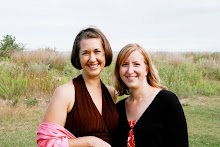Those unfamiliar with Mansfield Park will miss a huge chunk of the fun here. In Austen's original, three sisters marry with varying degrees of success. Lady Bertram married well up and produced three children, Tom, Edmund, Maria, and Julia. Mrs. Norris did just fine, marrying the parson of the estate, and is now widowed with no children. The third sister married imprudently for love and produced a passel of children they can ill-afford, among them Fanny, the oldest girl, Susan, the next oldest, and William. Fanny is closest to Susan and William and misses them the most when she is sent to live with the Bertrams as a money-saving measure, where only Edmund treats her with kindness. Sister and brother Mary and Henry Crawford come to live in the parsonage. Henry begins a flirtation with all the girls, while Mary has her sights on Edmund. Shepherd interferes with the relationships and status of Austen's characters. Now Fanny is a spoiled orphan heiress who comes to live with her socially inferior cousins, the Bertrams, Edmund is Mrs. Norris's son, Henry Crawford has a profession, and Mary Crawford is a virtuous girl. This is the first reimagining of the novel. The second turns Mansfield Park into a Regency crime novel when Fanny turns up dead and Mr. Maddox is summoned to get to the bottom of the matter. This second approach has a number of effects: the servants figure more prominently, since they are a great source of information to Mr. Maddox, Mr. Maddox himself adds a wrinkle into the class portrayals, and much of the social commentary is redirected into the murder investigation.
I found a great deal of enjoyment in this novel, but I felt it was overly ambitious. Either of the two premises would have been sufficient, but both crammed together seemed excessive. Either shed light on class divisions by turning the relationships on their head or reimagine the novel as a murder mystery, but both is too much departure from the original material. Austen's own words are incorporated extensively, but Shepherd's prose blends almost seamlessly. She has an impressive command of Regency language and of Austen's brand of humor. Ultimately, there is simply too much going on here to really shed light on Austen's original, and the reader has far too many departures of which to keep track. I kept forgetting that WIlliam wasn't Fanny's brother in this interpretation, the class change for Henry was a sticking point, Edmund as Mrs. Norris's son...all this and more AND with a murder mystery thrown in. While there were fun, insightful parts, the rest was chaos.
An overly ambitious reimagining of Austen, but one with plenty of enjoyable moments.
Source disclosure: I received an advance copy of this book from the publisher through LibraryThing's Early Reviewer program.












No comments:
Post a Comment